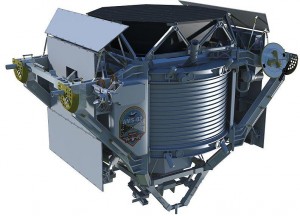THURSDAY, 14 APRIL 2011
Laboratory physicists have shown that whenever a particle of matter is created so too is an antimatter counterpart, yet we have yet to observe such a phenomenon in nature. One theory is that the process of creation was unequal in the favour of matter and that antimatter was destroyed when it came into contact with matter in the early universe. Because of this possibility, there are many who are skeptical about the potential of the AMS, but it is the hope scientists involved in the mission that the spectrometer may detect particles of anti-helium. Since almost all of the helium in the universe was created in the first few minutes after the big bang it comes to reason that the same can be said about anti-helium. Therefore detection of such a particle implies that there is anti-matter out there that managed to survive any early collision with matter in the universe and that there may be pockets that still exist [1].The AMS also has an alternative objective. When an early prototype was sent into space in 1998 it detected an entirely new form of matter, labeled “strange matter”. It is hypothesized that strange matter is more stable that the nuclear matter that you and I and everything else are made from, and that eventually all matter in the universe will decay to its more stable “strange” form. This would imply that the nuclear matter that we see around us exists only in a metastable state. If these early findings are confirmed then a severe rethink of our entire understanding of the universe will be needed.
Written by Richard Thomson

